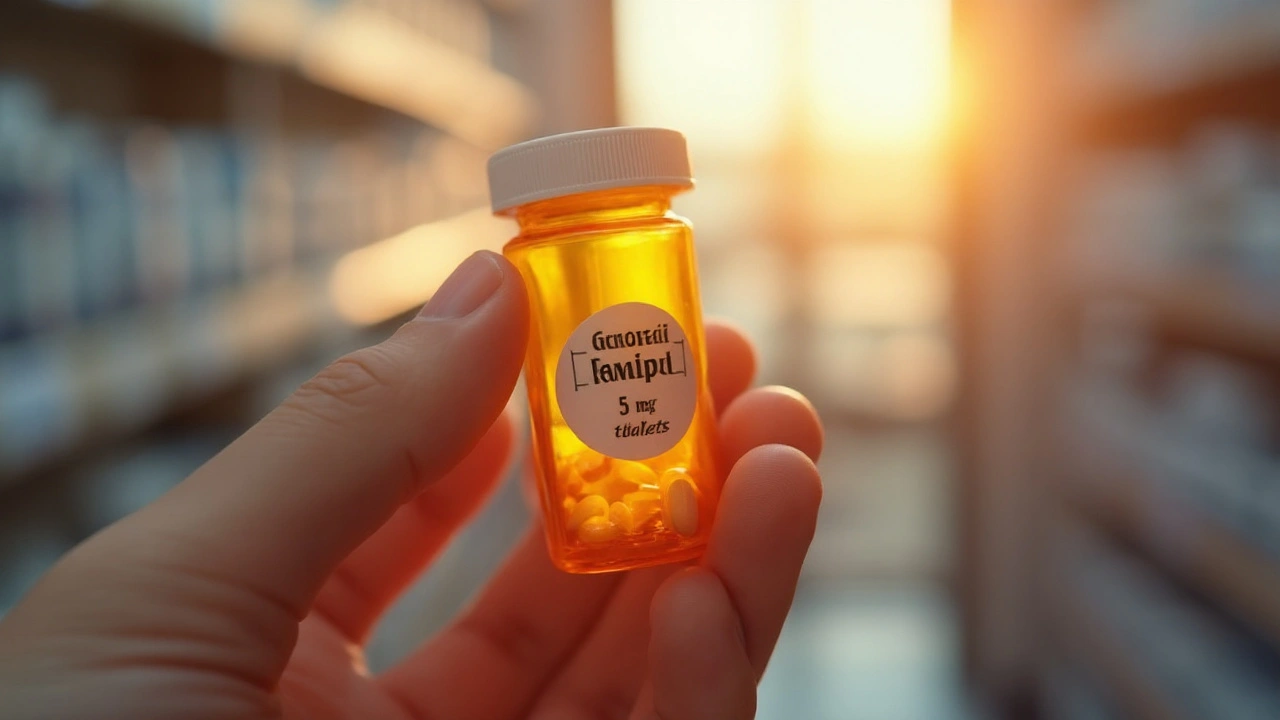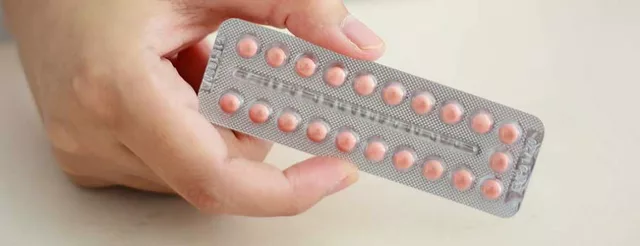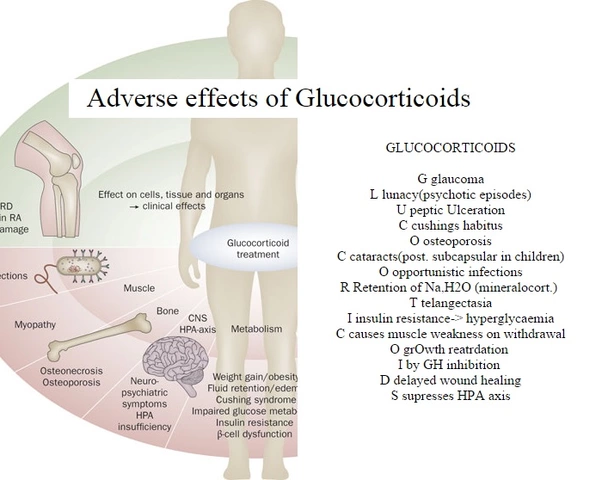TL;DR:
- Altace is the brand name for ramipril, an ACE‑inhibitor used mainly for high blood pressure and heart failure.
- Typical starting dose for hypertension is 2.5mg once daily, titrated up to 10mg as needed.
- Common side effects include cough, dizziness, and elevated potassium; serious reactions are rare but include angio‑edema.
- Do not combine with potassium‑rich foods or supplements without doctor approval.
- Check kidneys and blood pressure regularly; report any swelling of the face or throat immediately.
What is Altace and How Does It Work?
Altace is the trade name for ramipril, a medication that belongs to the class called ACE (angiotensin‑converting enzyme) inhibitors. By blocking the enzyme that narrows blood vessels, ramipril relaxes the vessels, making it easier for the heart to pump blood. This drop in resistance lowers blood pressure and reduces the workload on the heart, which is why doctors prescribe it for hypertension, heart failure, and after a heart attack.
Because it targets a specific step in the body’s renin‑angiotensin system, the effect shows up within a few hours, but the full benefit on blood pressure may take a week or more of consistent use.
When Is Altace Prescribed? Key Indications
Doctors turn to Altace for several reasons:
- High blood pressure (hypertension): When lifestyle changes aren’t enough, ramifpril helps achieve target numbers below 130/80mmHg for most adults.
- Heart failure with reduced ejection fraction: It improves symptoms, lowers hospitalization risk, and can extend survival.
- Post‑myocardial infarction: Starting an ACE inhibitor within 24‑48hours after a heart attack cuts the chance of another event.
- Kidney protection in diabetes: In patients with diabetic nephropathy, ramipril slows the decline of kidney function.
While the drug is versatile, it isn’t a one‑size‑fits‑all solution. People with certain conditions-like severe kidney disease or a history of angio‑edema-should avoid it.

How to Take Altace: Dosage, Timing, and Practical Tips
Getting the dose right is crucial for both effectiveness and safety. Below is a practical guide that matches common prescribing patterns in the U.S. as of 2025.
- Start low, go slow: Most doctors begin with 2.5mg once daily for hypertension or 1.25mg twice daily for heart failure.
- Gradual titration: If blood pressure is still high after a week, the dose can be increased by 2.5mg increments. The usual maintenance range is 5‑10mg daily.
- Take at the same time each day: Consistency helps keep blood levels steady. Many patients pair it with a morning routine.
- Swallow whole: Do not crush or chew the tablet; the coating protects the drug from stomach acid.
- Missed dose: If you realize within 12hours, take it as soon as you remember. Otherwise, skip it and resume your regular schedule.
Here are a few real‑world tricks that patients find useful:
- Set a phone alarm labeled "Altace" to avoid forgetting.
- Use a pill organizer that separates morning and evening doses.
- Keep the bottle in a visible spot, like next to your toothbrush.
Side Effects, Interactions, and Precautions
Like any medication, Altace has a side‑effect profile you should be aware of.
Common, usually mild effects
- Dry cough - occurs in up to 10% of users; may improve after a few weeks or require a switch to a different class.
- Dizziness or light‑headedness - especially after the first few doses; stand up slowly.
- Headache, fatigue, or nausea - often temporary.
Serious, though rare, reactions
- Angio‑edema - swelling of lips, tongue, or throat. Any sign requires immediate emergency care.
- High potassium (hyper‑kalaemia) - especially if you’re on potassium‑sparing diuretics or supplements.
- Rapid kidney function decline - monitor creatinine and eGFR after starting therapy.
Key drug interactions
- Non‑steroidal anti‑inflammatory drugs (NSAIDs): Can blunt the blood‑pressure‑lowering effect and increase kidney risk.
- Potassium supplements or salty foods: Raise potassium levels, which may become dangerous.
- Other ACE inhibitors or ARBs: Using them together adds no benefit and raises side‑effect risk.
Before you start Altace, tell your doctor about all medicines you take - prescription, OTC, and herbal. Pregnancy and breastfeeding are contraindications; the drug can harm a developing fetus.

Monitoring, Frequently Asked Questions, and Next Steps
Even after you’re on a stable dose, regular check‑ins keep you safe.
- Blood pressure: Measure at home and share the log with your clinician.
- Kidney function: Blood tests for creatinine and eGFR at baseline, then after 2‑4weeks, and periodically thereafter.
- Electrolytes: Check potassium levels especially if you have diabetes or are on diuretics.
Mini‑FAQ
- Can I stop Altace abruptly? No. Stopping suddenly may cause a rebound rise in blood pressure. Taper under doctor guidance.
- Is the cough from Altace permanent? For most, it eases after a few weeks. If it persists, ask about switching to an ARB.
- Do I need a special diet? Avoid excess salt and high‑potassium foods (like bananas, oranges, and tomatoes) unless your doctor says otherwise.
- What if I miss a dose twice in a row? Call your healthcare provider; they may adjust the schedule.
- Can I take Altace with alcohol? Moderate alcohol isn’t a direct interaction, but both can lower blood pressure, so watch for dizziness.
When to Call the Doctor
- Sudden swelling of the face, lips, or throat.
- Persistent cough that disrupts sleep.
- Signs of low blood pressure - fainting, severe dizziness.
- New onset of muscle pain or weakness.
If any of these happen, seek medical attention right away.
Next Steps for New Patients
- Schedule a baseline blood‑pressure check and blood work (creatinine, eGFR, potassium).
- Review your medication list with your pharmacist to spot potential interactions.
- Set up a daily reminder and a simple log to track blood‑pressure readings.
- Plan a follow‑up visit in 2‑4weeks to review labs and adjust dose if needed.
Sticking to this routine maximizes the benefits of Altace while keeping risks low.
By understanding how the drug works, following the right dose, and staying on top of monitoring, you can manage blood pressure effectively and protect heart health.










September 22, 2025 AT 04:28
Norman Rexford
man i took this for 3 years and my cough was so bad i couldnt sleep
doc said it was normal but bro it felt like my lungs were being scraped with sandpaper
switched to losartan and suddenly i could breathe again
why do they even still prescribe this if the cough is so common?
September 23, 2025 AT 17:37
ridar aeen
my grandma’s on this and she forgets to take it every other day
we put her pill organizer next to her coffee maker and now she takes it with breakfast
simple stuff works
also she stopped eating bananas and now her potassium’s fine
September 25, 2025 AT 11:37
chantall meyer
ramipril is just another western pharmaceutical placebo dressed up as science
if you want real heart health eat less salt and walk more
no need for expensive pills that make you cough
September 26, 2025 AT 17:58
Lorne Wellington
hey everyone just wanted to say - if you’re on this and get dizzy, stand up slow like your body’s trying to tell you something 😊
also if you’re on potassium supplements, please talk to your doc first
we’ve had patients crash hard from combo effects
you’re not alone, and your health matters - take it one day at a time 🙌
September 28, 2025 AT 12:07
Will RD
altace is trash
my uncle died from angioedema on it
doctors don’t warn people enough
September 29, 2025 AT 20:24
Jacqueline Anwar
It is deeply concerning that this post presents ACE inhibitors as benign, routine interventions. The data on long-term renal and electrolyte consequences is not trivial. One must consider the ethical implications of normalizing pharmacological dependency for lifestyle-related conditions. This is not medicine. It is commodified convenience.
September 30, 2025 AT 20:06
Ganesh Kamble
why are people still using this in 2025? ARBs are better, cheaper, no cough, same results
this guide is outdated like a flip phone
October 1, 2025 AT 18:34
Jenni Waugh
OMG I JUST REALIZED I’VE BEEN TAKING THIS WITH A CAN OF TOMATO SOUP EVERY MORNING 😱
MY POTASSIUM MUST BE THROUGH THE ROOF
THANK YOU FOR THIS POST I’M GOING TO CALL MY DOCTOR RIGHT NOW
October 2, 2025 AT 13:26
Theresa Ordonda
if you’re taking this and you’re not tracking your BP at home, you’re playing russian roulette 🎲
my mom’s BP was fine at the clinic but 170/100 at home
now she logs it every morning with her coffee
and yes, she still coughs
but she’s alive
so worth it 💪
October 4, 2025 AT 06:27
Judy Schumacher
One must question the systemic incentives that promote the proliferation of ACE inhibitors in primary care. The pharmaceutical industry’s influence on clinical guidelines is not incidental - it is structural. Ramipril is not a solution. It is a symptom of a broken healthcare paradigm. Your kidneys are not a commodity to be managed with a pill. You are not a data point.
October 5, 2025 AT 14:55
Megan Raines
so… if i’m on this and i drink green tea every day, am i gonna die?
just asking for a friend
… who is me
October 6, 2025 AT 17:41
Mamadou Seck
the cough is the worst part
you think you have a cold but its the med
and then you feel guilty for wanting to quit
like youre being weak
but its not you its the damn pill
October 7, 2025 AT 16:32
Anthony Griek
took this after my heart attack
doc said it could save my life
turns out it did
my BP’s down, my ejection fraction’s up
yeah i cough sometimes but i’m alive
and i can play with my grandkids without getting winded
so i’ll take the cough
October 7, 2025 AT 21:01
Wayne Keller
biggest tip: take it in the morning
if you take it at night you’ll be up all night peeing
and if you’re dizzy, don’t drive until you know how it hits you
you’re not being lazy - your body’s adjusting
and it’s okay to ask for help
October 8, 2025 AT 02:41
Shana Labed
YOOOOO I JUST FOUND OUT I’M ON A 5MG DOSE BUT MY DOCTOR MEANT TO PRESCRIBE 2.5MG 😭
THANK YOU FOR THIS POST I’M CALLING THEM TOMORROW
MY HEART IS SO GRATEFUL 💖
October 8, 2025 AT 12:51
California Daughter
…so… this is just a fancy name for a drug that makes you cough and gives you a weird taste in your mouth? and you’re supposed to be grateful? wow. just wow.
October 9, 2025 AT 07:16
Vishwajeet Gade
in india we use amlodipine for everything
why waste money on ramipril?
it's overrated
October 10, 2025 AT 22:29
Casey Crowell
just wanna say - if you’re scared to take this because of the side effects, you’re not alone
but if you’re on it and feeling better? that’s huge
your body’s fighting for you - don’t give up on it 😊
and if you’re coughing? try honey tea. it helps more than you think
October 12, 2025 AT 06:33
Shanna Talley
my dad’s been on this for 12 years
he’s 82
he walks 3 miles every morning
he doesn’t need a cane
he says the cough is the price of breathing easy
and honestly? i think he’s right